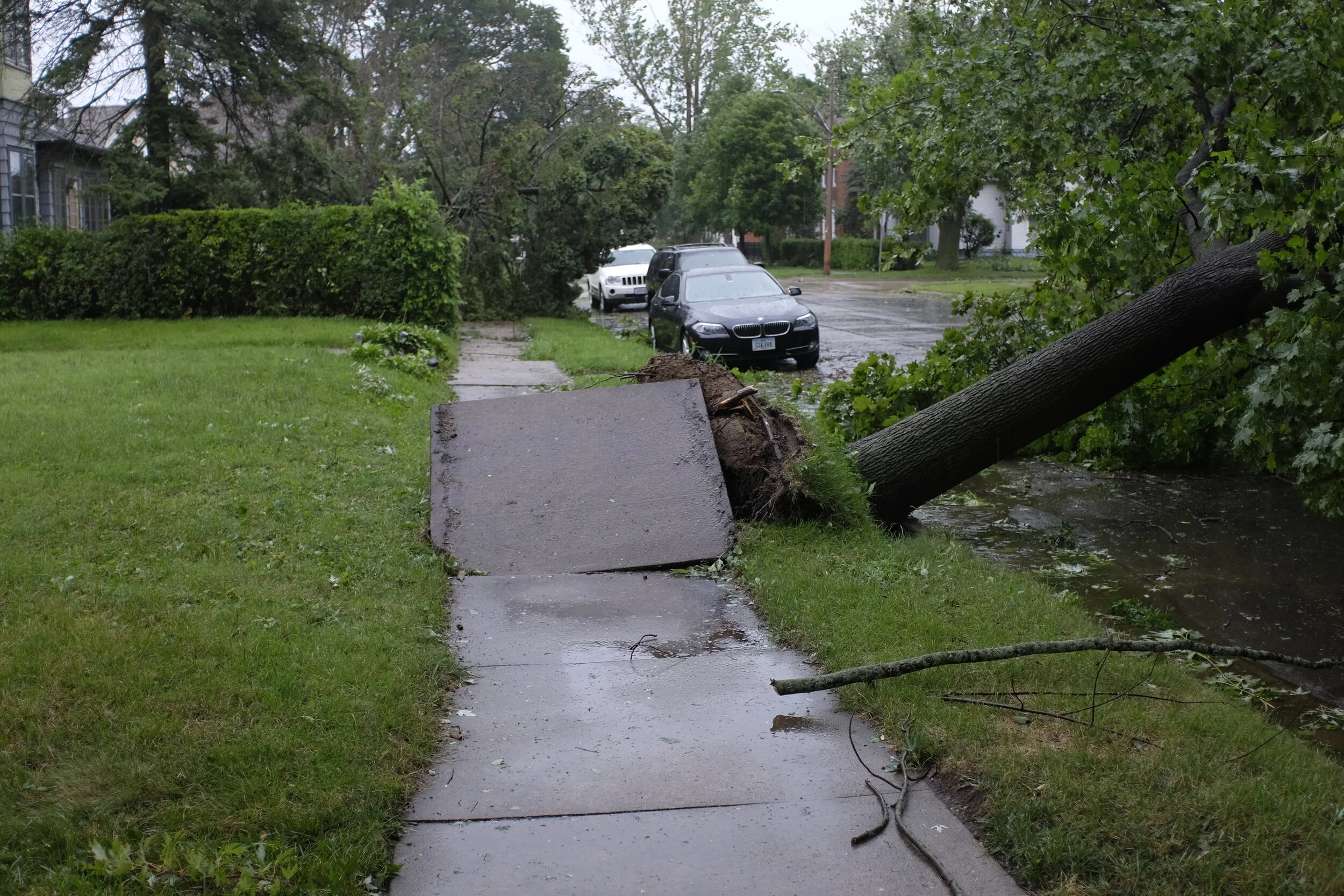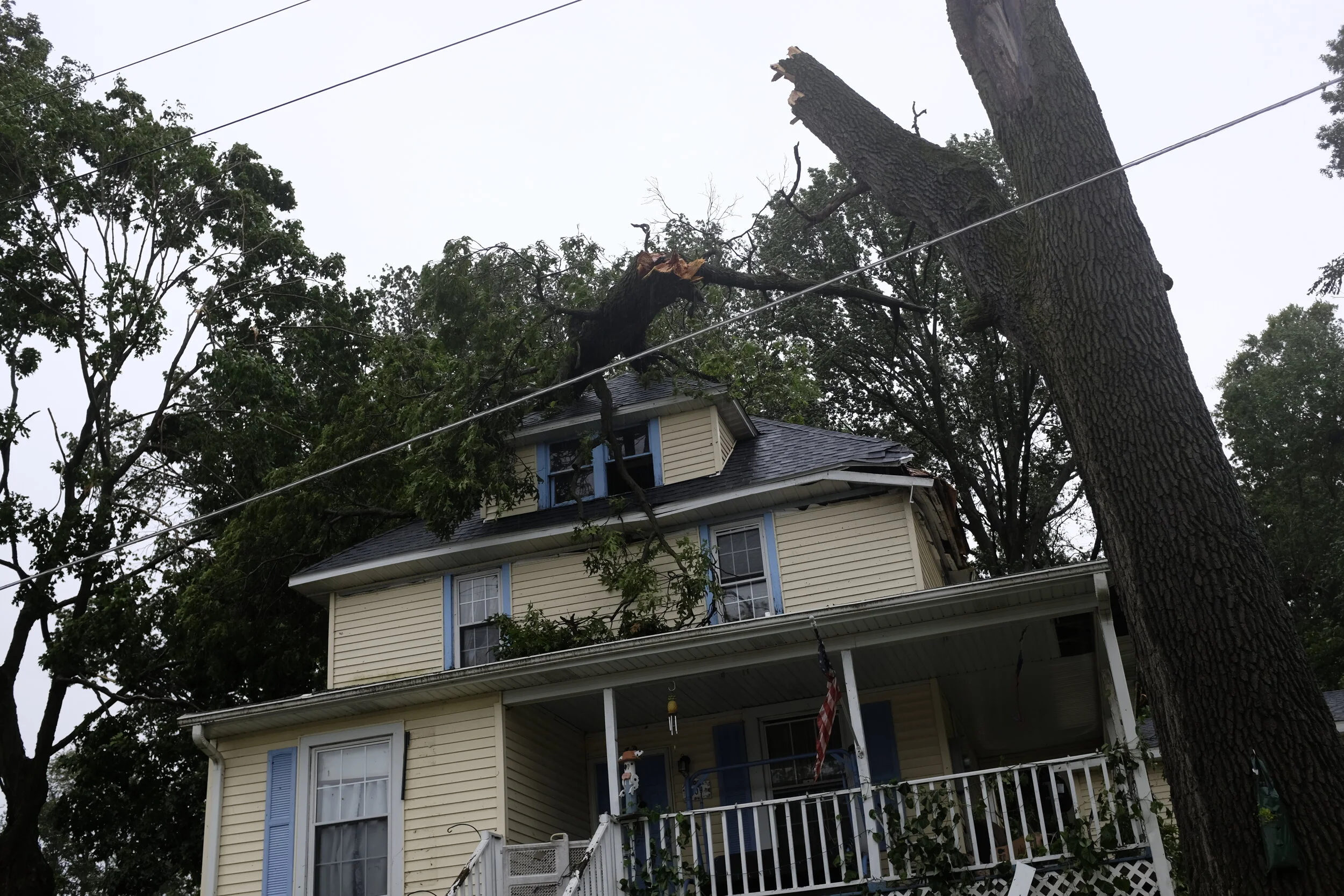The Crossroads of Ruin
In one of my favorite books, Housekeeping, by Marilyn Robinson, two young girls named Ruth and Lucille grow up under the looming shadow of loss, decay, depression. Their mother, while they were still very young, drove her car into a lake, killing herself. The girls then move in with their grandma. She was charged with caring for the girls. She eventually passes and their aunt Sylvie is called in to care for them. She is a transient. She is wanderer. And she has odd habits of keeping house.
The book really is an exploration into how people respond to the worlds immense sadness and the decay that surrounds us. Their aunt Sylvie sleeps with her cloths on, carries conversations with imaginary friends, and eats in the dark. Long ago she was faced with the sadness of her own life and she responded. And the book explores two main responses. The girls diverge toward opposite ends. Lucille grows irritated at her aunts odd habits of housekeeping. She learns to sew her own dresses to keep up with the latest style, she becomes fastidiously neat, and she becomes incredibly agitated at any behavior her sister displays that keeps them from fitting in. Ruth on the other hand retreats into the shadows. She learns that if you stop fighting the cold the feeling of being cold no longer becomes uncomfortable. She learns to live in the decay. She is what we would maybe call apathetic or complacent with the world and its ruin.
The books resolution happens when Sylvie and Ruth run away together. This is the consummation of Ruths response to the sadness. She has chosen the life of a wanderer, a transient. And as she rides the rails she passes the town of Fingerbone, where her and Lucille lived together. And as she catches a glimpse of the old house, she imagines Lucille keeping house, always waiting to be reunited with what was lost. Ruth imagines Lucille aggressively attempting to stalemate the forces of ruin.
In my own life I am living at the same crossroads. 2020 has been tough. Following the call to plant a church is work enough. There are enough obstacles to overcome just to begin the seed planting of a spiritual people. But throw on top of that Covid-19, a near death experience severing nerves in my right arm, and the recent blow down of nearly ever old growth tree in Clinton County. Also, my family of 5 is all living in one room at my parents place while we wait for our 132 year old house to be livable. For the first time in my life I understand the crossroads all people face at one time or another. Some of the ruin is a consequence of my own decisions. Some of it is not. Do I manically pull myself up by my bootstraps, charge into the chaotic sadness and attempt to stalemate the forces of ruin. Or do I lean into the sadness, stop fighting, and let the decay become part of the contours of my life.
My tree in the front yard. It has a crack splitting the tree all the way to the roots. I have no idea how the branch aiming at our big picture window has not fallen. So we ratchet strapped it. This perfectly captures and illustrates the phrase, “stalemating the forces of ruin.”
A story sticks out in my mind that illustrates this perfectly. My old house, in general, is a story like many old houses, of a once great structure that has fallen into disrepair, and has fallen into that familiar toxic cultural cycle—the big broken things are so expensive to repair no one wants them, so they sell for cheap to people who can’t afford to keep it up. And so my house is a story of deferred maintenance bumped off down the road for decades. Small problems that could have been addressed early with small amounts of money and diligent effort are now large problems that require large amounts of money and back breaking work. For example, the other day we were cleaning the door at the bottom of our stairs. There is one spot on that door where a dirty hand must have opened it holding the same spot on the upper part of the outside stile. It has left a decade old black smudge. And so while we were cleaning it someone said, “I just don’t understand how someone can live like this.” They were commenting on the fact that all it would have take was a once a week or once a month wipe down to prevent a dirt spot that took hours to clean with hot water and vinegar.
I’ve since reflected on this. How could someone pass by a dirty hand print and not clean it up? But then I thought, the dirty hand print is just one manifestation of the larger mosaic of ruin and misery that must have been present in their lives. It’s like expressing frustration at a person struggling with chronic depression, exclaiming “I don’t now why you don’t just get out of bed!” The psychological, physical, emotional, mental, spiritual ruin some people live in keeps them from seeing the handprint as obvious. They don’t see the problem as fixable, nor do they feel the efficacy to fix it. The totality of the ruin that surrounds them eventually threatens to overrun them. And when it does, they experience what some call “giving up.” But that phrase is a bit facetious. What actually happens for people when they are at the crossroads of personal ruin is more devastating. The burden of the worlds sadness crushes them, and they break.
Understanding even a sliver of this existential horror show allows a person to really hear the invitation of Jesus as gospel. The tender beckoning of “come to me, all who labor and are heavy laden, and I will give you rest. Take my yoke upon you, and learn from me, for I am gentle and lowly in heart, and you will find rest for your souls. For my yoke is easy, and my burden is light.”
These words express the basic gospel hope for a people crushed by their load of misery. Jesus stands in solidarity with the crushed, because he was crushed with the full brunt of the worlds decay, and he died rotten on that cursed old growth tree. But he alone stalemated the forces of ruin. And more than that, he triumphed victoriously, shedding the horrors of hell. And so his invitation is to participate in a different way. He calls to a people at the crossroads of ruin, and he says don’t give up, but don’t try and climb out by yourself. He instead climbs in with us, absorbs the burden we cannot bear, and calls us to bear the lighter load of faith—trusting that he will one day consummate our joy by restoring all things to himself.
And so the people who find themselves at the foot of the fallen decaying tree, need to also know that Jesus was crushed under that on their behalf. And so we should throw ourselves into the good work of restoring power to our deep freezes and pulling hard maples off the roof of our neighbors houses. But we must remember that the physical ruin manifests a much deeper spiritual ruin, one that Jesus wants to lighten for the world.











